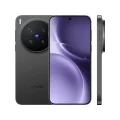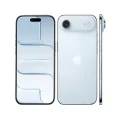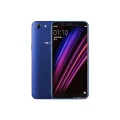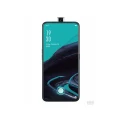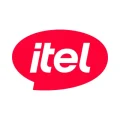- Home
- All Products
- Google Pixel
- Google Pixel 10 Pro XL
Google Pixel 10 Pro XL
-
Battery: 5200 mAh
-
RAM: 16GB, 16GB, 16GB
-
Storage: 256GB, 512GB, 1TB
-
Display: LTPO OLED, 6.8 inches
-
Camera: Rear 50 MP+48 MP+48 MP, and Front 42 MP
-
OS: Android 16, up to 7 major Android upgrades
Full Specifications
Price
| Official | 149999 BDT 16GB/256GB Approx. |
General
| Model | Google Pixel 10 Pro XL |
| Announced | 2025, August 20 |
| Released | 2025, August 28 |
| Status | Coming Soon |
Design
| Dimensions | 162.8 x 76.6 x 8.5 mm (6.41 x 3.02 x 0.33 in) |
| Weight | 232 g (8.18 oz) |
| SIM SIM (Subscriber Identity Module) is a small card that contains mobile network subscriber's account information. This allows the phone using the card to attach to a mobile network. The SIM card is most commonly associated with GSM and UMTS mobile networks. Moving a SIM card from one phone to another allows a subscriber to switch mobile phones without having to contact their mobile network carrier. SIM cards can also be used by a phone to store limited amounts of data, such as phone numbers and text messages. |
Nano-SIM + eSIM |
| Colors |
Moonstone, Jade, Porcelain, Obsidian |
Display Specification
| Display Type Display Technology => A number of display technologies and types used in mobile phones => TFT (Thin Film Transistor), IPS (In-Place Switching), OLED (Organic Light Emitting Diode), AMOLED (Active-Matrix Organic Light-Emitting Diode), Super AMOLED (an even advanced version of AMOLED), Resistive Touchscreen (Resistive touchscreens contain two layer of conductive material with a very small gap between them which acts as a resistance), Capacitive Touchsceen (Capacitive touchscreen technology consists of a layer of glass coated with a transparent conductor) | LTPO OLED |
| Size | 6.8 inches, 109.7 cm2 |
| Resolution | 1344 x 2992 pixels, 20:9 ratio |
| Refresh Rate | 120Hz |
| Pixel Density Pixel Density (PPI) is refers to the concentration of pixels on a particular display, measured in pixels per inch (ppi). Pixel density is calculated by dividing the diagonal pixel resolution of a display by its diagonal size, higher pixel density better display quality. | 486 ppi density |
| Display Protection Display Protection => Gorilla Glass is a special alkali-aluminosilicate glass shield with exceptional damage resistance that helps protect mobile displays from scratches, drops, and bumps of everyday use, It is always better to go for a smartphone with Gorilla Glass for that added protection and peace of mind. | Corning Gorilla Glass Victus 2, Mohs level 4 |
| Features |
HDR10+, 2200 nits (HBM), 3300 nits (peak) 88.0% screen-to-body ratio |
Platform
| Operating System OS => Every computer system run on a base software called Operating System (OS). Operating System controls all basic operations of the computer (such as smartphone, PDAs, tablet computers and other handheld devices). The Operating System allows the user to install and run third party applications (apps), apps are used to add new functionality to the device. | Android 16, up to 7 major Android upgrades |
| Chipset Chipset is a group of integrated circuits designed to perform one or a more dedicated functions, often with real time computing constraints, Popular smartphones are equipped with more advanced embedded chipsets that can do many different tasks depending on their programming. | Google Tensor G5 (3 nm) |
| CPU CPU (Central Processing Unit) mostly known as processors, CPU processes instructions in order to carry out certain functions that make your device operate properly. Processors are often described as the brain of computers, smartphones and tablets, Smartphones and tablets rely on processors to carry out their every task, Processors are an incredibly important factor in selecting any type of computing device, including your smartphone. | - |
| GPU GPU (Graphics Processing Unit) is a single-chip processor designed to rapidly manipulate and alter memory to accelerate the creation of images in a frame buffer intended for output to a display, This includes things such as lighting effects, object transformations, and 3D motion. | - |
Main Camera
| Camera Setup | Triple |
| Resolution |
50 MP, f/1.7, 25mm (wide), 1/1.31", 1.2µm, dual pixel PDAF, OIS 48 MP, f/2.8, 113mm (periscope telephoto), 1/2.55", dual pixel PDAF, OIS, 5x optical zoom 48 MP, f/1.7, 123˚ (ultrawide), 1/2.55", dual pixel PDAF, |
| Features |
Multi-zone Laser AF, LED flash, Pixel Shift, Ultra-HDR, panorama, Best Take, Zoom Enhance |
| Video | 8K@30fps (via cloud-based upscaling), 4K@24/30/60fps, 1080p@24/30/60/120/240fps; gyro-EIS, OIS, 10-bit HDR |
Selfie Camera
| Camera Setup | Single |
| Resolution |
42 MP, f/2.2, 17mm (ultrawide), PDAF |
| Video | 4K@30/60fps, 1080p@30/60fps |
| Features |
HDR, panorama |
Network & Connectivity
| Technology | GSM / HSPA / LTE / 5G |
| Speed | HSPA, LTE (CA), 5G |
| Wi-fi Wi-Fi is a popular wireless networking technology using radio waves to provide high-speed network connections that allows devices to communicate without cords or cables, Wi-Fi is increasingly becoming the preferred mode of internet connectivity all over the world. | Wi-Fi 802.11 a/b/g/n/ac/6e/7, tri-band |
| Bluetooth Bluetooth is a wireless communications technology for exchanging data between mobile phones, headsets, computers and other network devices over short distances without wires, Bluetooth technology was primarily designed to support simple wireless networking of personal consumer devices. | 6.0, A2DP, LE, aptX HD |
| NFC NFC (Near field communication) is a set of standards for smartphones and similar devices to establish peer-to-peer radio communications with each other by touching them together or bringing them into proximity, usually no more than a few inches. | Yes |
| Positioning |
GPS (L1+L5), GLONASS, GALILEO, BDS, QZSS, NavIC |
| FM Radio | No |
| Infrared port | USB Type-C 3.2 |
| 2G Network |
GSM 850 / 900 / 1800 / 1900 |
| 3G Network |
HSDPA 800 / 850 / 900 / 1700(AWS) / 1900 / 2100 |
| 4G Network |
1, 2, 3, 4, 5, 7, 8, 12, 13, 14, 17, 18, 19, 20, 21, 25, 26, 29, 30, 30, 32, 38, 39, 40, 41, 42, 48, 66, 71, 75 - G45RY 1, 2, 3, 4, 5, 7, 8, 12, 13, 14, 17, 18, 19, 20, 25, 26, 28, 29, 30, 38, 40, 41, 48, 66, 71 - GUL82 |
| 5G Network |
1, 2, 3, 5, 7, 8, 12, 14, 20, 25, 26, 30, 38, 40, 46, 71, 75, 76, 77, 78, 79 SA/NSA/Sub6 - G45RY 1, 2, 3, 5, 7, 8, 12, 14, 20, 25, 26, 28, 29, 30, 38, 40, 41, 48, 66, 70, 71, 77, 258, 260, 261 SA/NSA/Sub6/mmWave - GUL82 |
Battery
| Battery Type Battery Type => Cell phones run on various kinds of batteries depending on the manufacturer, phone size or shape and features. There are basically four types of cell phone batteries => Lithium Polymer, Lithium Ion, Nickel Metal Hydride and Nickel Cadmium. | Li-Ion (Lithium Ion) |
| Capacity Battery Capacity is a measure (typically in Amp-hr) of the charge stored by the battery, and is determined by the mass of active material contained in the battery. The battery capacity represents the maximum amount of energy that can be extracted from the battery under certain conditions. | 5200 mAh |
| Removable | No |
| Charging |
45W wired, PD3.0, PPS, 70% in 30 min 25W wireless (magnetic), Qi2 Reverse wireless Bypass charging |
| Wireless Charging Wireless Charging (Inductive Charging) uses an electromagnetic field to transfer energy between two objects. This is usually done with a charging station. Energy is sent through an inductive coupling to an electrical device, which can then use that energy to charge batteries or run the device. | Yes |
Multimedia
| Loudspeaker | Yes, with stereo speakers |
| Audio Jack | No |
Storage
| Card Slot Memory Card Slot is a special slot for inserting a memory card. Memory cards allow you to expand the phone's built-in memory, A memory card (sometimes called a flash memory card or a storage card) is a small storage medium used to store data such as text, pictures, audio, and video, for use on small, portable or remote computing devices such as mobile phones, mp3 players, digital cameras. | No |
| Internal Storage Internal Storage is a data storage space (flash memory) mostly used in smartphones, tablets and other electronic devices where operating system, apps, music, photos, videos, files and other user data Is stored. |
256GB 16GB RAM, 512GB 16GB RAM, 1TB 16GB RAM |
Sensors
| Fingerprint | Yes (under display, ultrasonic) |
| Other Sensors | accelerometer, gyro, proximity, compass, barometer, thermometer (skin temperature), Ultra Wideband (UWB) support, Satellite SOS service, Circle to Search |
PROS
- Huge, ultra-bright display—ideal for content consumption and visibility in all lighting conditions.
- Top-tier camera experience, including 100× Pro Res Zoom and a flexible triple-lens setup.
- Longevity with seven years of OS & security updates, long battery, and rapid wireless charging.
- AI-enhanced usability with features like Magic Cue, Camera Coach, and on-device assistants.
- Improved audio clarity and bass, and a polished design with updated UI (Material 3 Expressive).
CONS
- Expensive premium: From $1,199 for the base, going higher with storage upgrades.
- Large and potentially heavy, which can be unwieldy as a daily carry.
- Some AI features feel inconsistent or gimmicky—e.g., Magic Cue is not always reliable, and overdone generative edits.
- Not the fastest in raw performance or battery, just over one day, though still solid.
About the Google Pixel 10 Pro XL
The Google Pixel 10 Pro XL is Google’s premium large-screen variant in the Pixel 10 series, officially unveiled on August 20, 2025, and released on August 28, priced starting for the 256 GB base model. The device builds on the success of its predecessors while delivering standout improvements—boasting a spacious 6.8-inch Super Actua OLED display with ultra-high brightness (claimed up to 3,300 nits) and smooth variable refresh rate (1–120 Hz). Under the hood, it runs on Google’s Tensor G5 chip—promising better AI and performance—and comes with 16 GB RAM, multiple storage options, and a long seven-year software update commitment. Its versatile triple-lens camera setup (50 MP wide, 48 MP ultrawide, 48 MP 5× telephoto) delivers up to 100× Pro Res Zoom, along with a richer battery and fastest wireless charging in the series.
Main Key Features
- Display: 6.8″ Super Actua OLED, 1–120 Hz refresh, brightness up to ~3,300 nits.
- Processor: Tensor G5 chip, optimized for AI and performance.
- Memory & Storage: 16 GB RAM; storage tiers at 256 GB, 512 GB, and 1 TB.
- Cameras: 50 MP wide + 48 MP ultrawide + 48 MP 5× telephoto. Features include ProRes Zoom up to 100×, High-Res Portrait Mode, Camera Coach, Add Me, Night Sight, Astrophotography, and companion AI tools.
- Battery & Charging: Massive 5,200 mAh battery—the largest in Pixel lineup—with fastest charging: wired 45 W (some sources suggest up to 29–39 W) and 25 W Qi2.2 magnetic wireless charging via PixelSnap technology.
- Extras: Qi2 wireless charging, refined audio system, Titan M2 security, Android 16 OS, and seven years of updates.
Why Choose This Phone?
The Pixel 10 Pro XL is your pick if you want the ultimate Pixel experience packed into a large, premium form—offering bright, vibrant viewing, unmatched camera versatility, AI intelligence, and a long service lifespan. If you’re after a device built for media, photography, and future-proof software support, this phone offers the most generous blend of features in the Pixel 10 lineup.
Opinion
The Pixel 10 Pro XL strikes a bold balance between style, substance, and smarts. It carves its niche as a large-screen powerhouse—backed by Google’s AI innovations and long-term support. While the price and size may not suit everyone, for users craving a top-tier display, innovative camera tricks, and a device that stands the test of time, it’s hard to beat what the Pixel 10 Pro XL brings to the table.
See Another Model:
FAQs about Google Pixel 10 Pro XL
Q: When was it released?
A: Announced August 20, 2025; released August 28, 2025
Q: What are the RAM and storage options?
A: 16 GB RAM; storage tiers: 256 GB, 512 GB, and 1 TB
Q: How big and bright is the display?
A: 6.8″ Super Actua OLED, brightness up to ~3,300 nits, refresh rate from 1 to 120 Hz
Q: What’s special about the camera?
A: Triple rear cameras (50 MP wide, 48 MP ultrawide, 48 MP 5× telephoto) with ProRes Zoom up to 100× and a suite of AI-powered shooting tools.
Q: Battery life and charging?
A: 5,200 mAh battery; fastest in Pixel lineup. Supports 45 W wired (some reports say 29–39 W) and 25 W Qi2.2 magnetic wireless charging.
Q: What AI features are included?
A: Includes Magic Cue, Camera Coach, Ask Photos, Voice Translate, Generative editing (Add Me), and more, powered by on-device AI
Give Your Review
Disclaimer Note
You can write your own disclaimer from APS Settings -> General -> Disclaimer Note.
